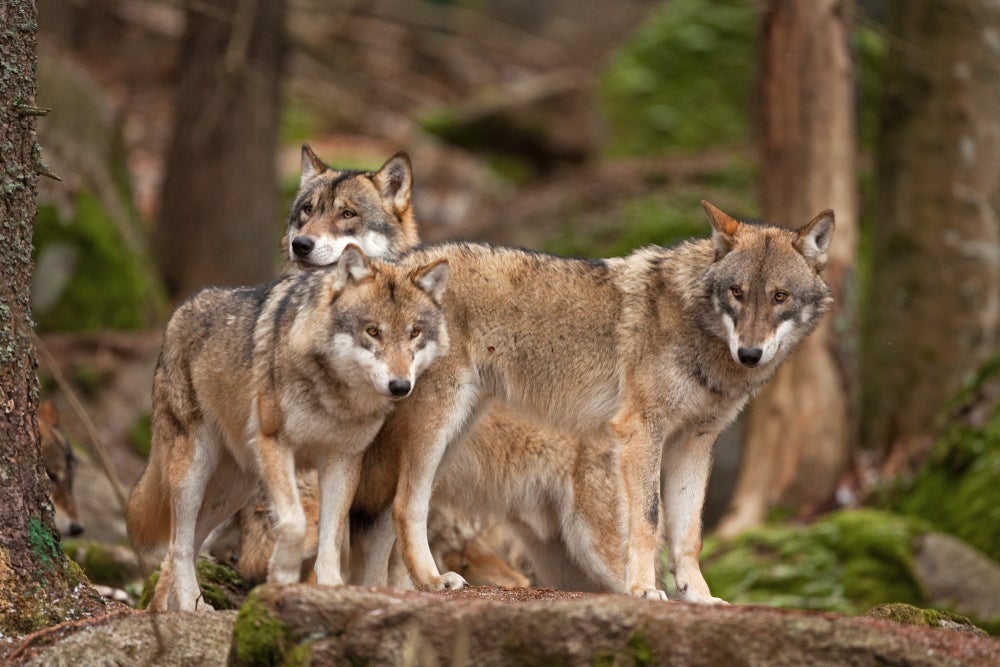The reintroduction of wolves is one of the most talked-about yet controversial goals of the UK rewilding movement – can AI help?
The many positive ecological and economic benefits of reintroducing the keystone apex predators are often rightly overshadowed by safety concerns and wrongly by the wolf’s historically evil reputation. But emerging technologies like AI, blockchain, and the Internet of Things (IoT) present opportunities to salve these concerns and bring back the time of the wolf.
Wolves would supercharge UK biodiversity, but safety concerns remain front of mind
The first and foremost reason why many UK rewilding advocates support reintroducing wolves is simply because they used to exist here before humans hunted them out of existence. Under the principles of rewilding, we are obligated to bring the wolves back. But aside from this, the UK would reap tangible benefits.
Wolves are a keystone species that can have a direct impact on biodiversity and ecological fragmentation. When wolves were reintroduced to Yellowstone National Park in 1995, the massively overgrazed forests and pastures were given a chance to recover as the wolves culled the elk population. Combined with the wolves scaring away coyotes, this helped other flora and fauna to thrive in the park.
If reintroduced to the UK, wolves would bring down deer populations, allowing biodiversity to explode. This would also have an economic impact by stopping the government from needing to pay farmers to control deer populations. On top of this, bringing wolves back to more remote parts of the UK could seriously boost tourism in these areas.
However, there are very salient arguments against the reintroduction of wolves, mainly focused on safety. The agricultural sector is strongly opposed to wolf reintroduction as it is likely wolves would attack livestock. On top of this, wolves could be a danger to unattended pets in rural areas, and many would not want to risk their cats and dogs.
There is also the looming possibility of a wolf attacking humans—potentially children. And so it is clear why wolf reintroduction has been so staunchly opposed by so many for so long. But in our fast-developing world, emerging technologies are providing solutions to so many societal problems. Surely we can apply this tech to the tricky subject of wolf reintroduction?
AI, blockchain, and IoT technology could help
One emerging technology that could be put to work defending livestock from wolves is AI.
A team from the University of Bremen is developing an AI-powered pasture fence to detect and deter wolves. The system uses night vision cameras to monitor the livestock pasture and AI then judges whether a wolf is present.
Once a wolf is detected, the fence system can then deploy ‘wolf deterrents’, like strobe lights or ultrasound transmissions. These are specially selected to frighten but not harm the wolves. This application of AI would help the case for reintroducing wolves by salving some safety concerns. These AI pasture fences could be set up outside farms, rural homes, and even schools to minimize attacks.
Another way emerging technologies could be used to support the reintroduction of wolves is through blockchain-powered nature-based currency (NBC). NBC is a proposed cryptocurrency that derives its value from the state of existing natural/living capital. In other words, the value of an NBC set up by the UK would increase if the UK’s natural and living capital improved.
By creating such an NBC, the UK government would incentivize itself to reintroduce wolves. The positive impact of wolves on biodiversity and ecological fragmentation (as outlined above) would drive up the value of the NBC, bringing more money into the country. Win-win!
Finally, many emerging technologies—including IoT, voice recognition, GPS, and satellites—could be used to observe and monitor the wolves once they are reintroduced. This would have the simultaneous benefits of helping to predict where the wolves will roam and hunt and increasing public appreciation for them.
Wolves have been unfairly stereotyped as cowardly and evil, but helping the public recognize them as the majestic keystone species that they are could instill an invaluable sense of pride in our countryside.









